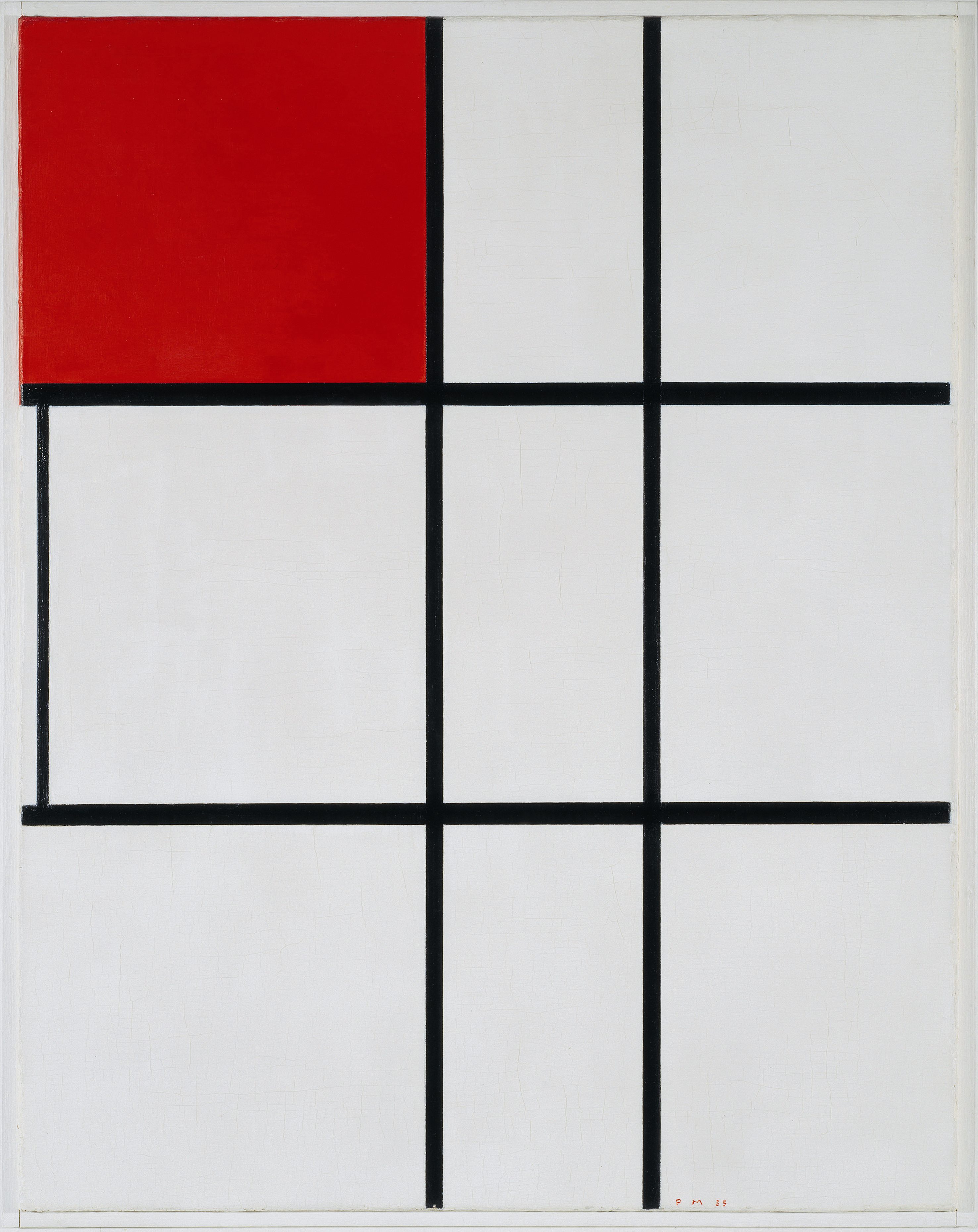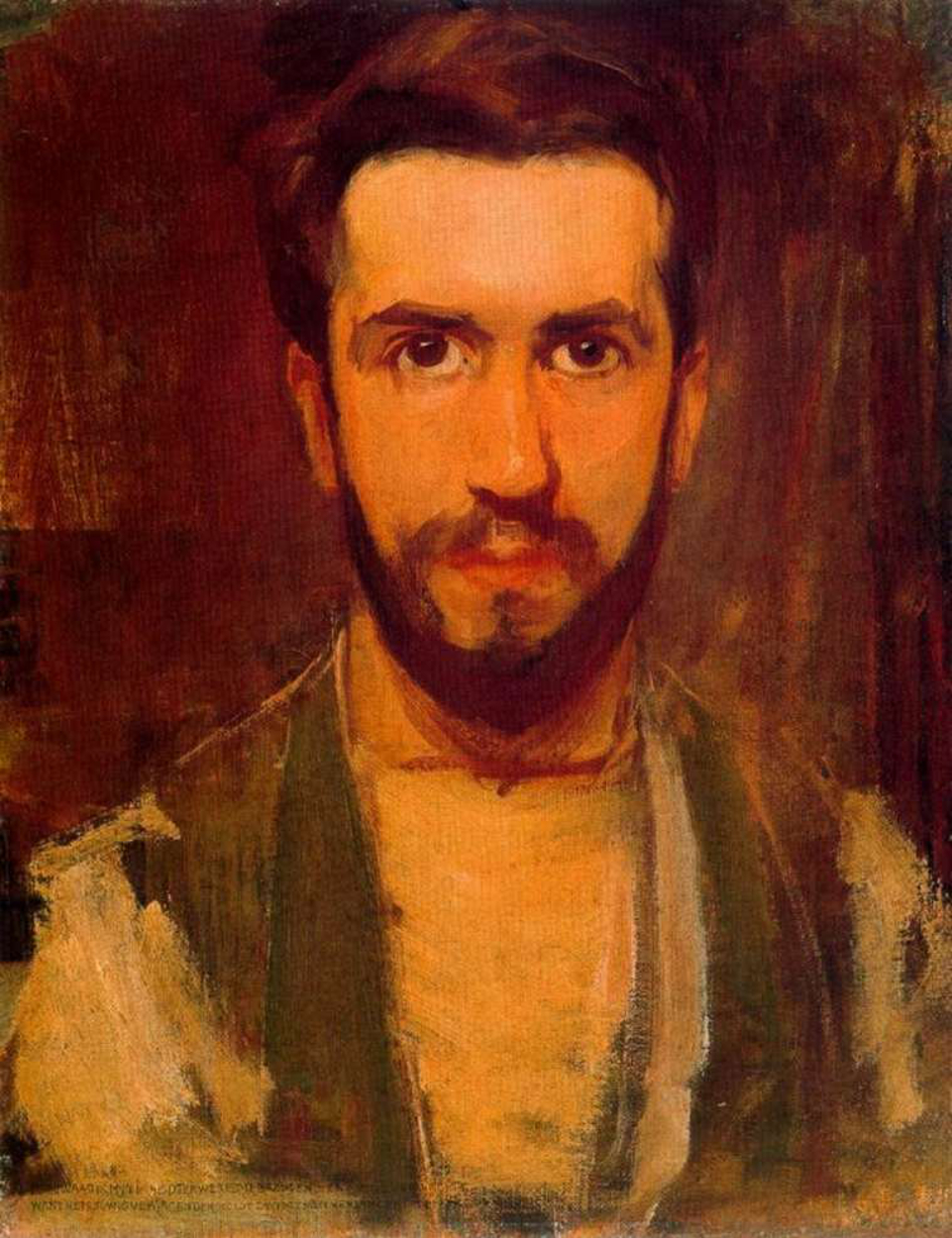Piet Mondrian arrived at his mature style of 'pure' abstraction around 1920, while living in Paris. He shunned all references to nature, and restricted himself to squares or rectangles of primary colours, set in white fields and bounded by intersecting straight lines. His canvases expressed, he believed, the principles of 'plastic equivalence', or what he termed 'neoplasticism'. With planes of primary colour balancing planes of non-colour (white, grey or black) and vertical lines opposing horizontal lines, and both acting to define the planes, his works embodied, he thought, principles of balance and harmony. He saw his carefully composed canvases as microcosms, or emblems, of a perfect equilibrium in art and in all spheres of life, and hoped that 'neoplastic' principles would underlie a future ideal society. In Mondrian's later works, such as Composition B with Red, lines no longer simply denoted the boundaries of the coloured planes. Instead they traversed the length and breadth of the canvases and became the most active elements in the compositions. The dynamic crossing of lines prevented the coloured planes from being seen as static entities, while the unequal intervals between the lines created a visual rhythm.




Composition B (No.II) with Red
oil on canvas • 80.3 x 63.3 cm
 Piet Mondrian
Piet Mondrian